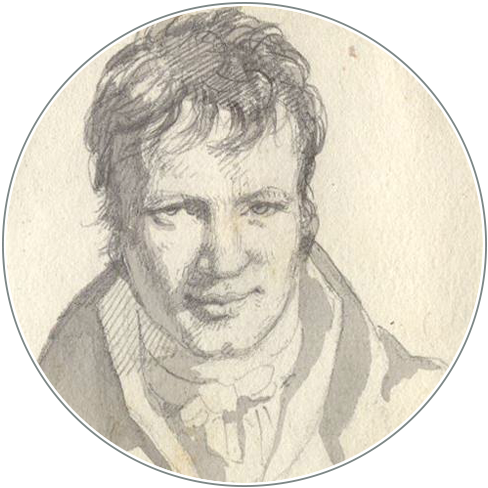Connecting the New World. Nets, mobility and progress in the Age of Alexander von Humboldt
DOI:
https://doi.org/10.18443/168Parole chiave:
Aufklärung, Beschleunigung, Fortschritt, Kommunikation, Mobilität, Netz, TransporttechnologieAbstract
Abstract
This article explores the link between the profound technological transformations of the nineteenth century and the life and work of the Prussian scholar Alexander von Humboldt (1769-1859). It analyses how Humboldt sought to appropriate the revolutionary new communication and transportation technologies of the time in order to integrate the American continent into global networks of commercial, intellectual and material exchange. Recent scholarship on Humboldt’s expedition to the New World (1799-1804) has claimed that his descriptions of tropical landscapes opened up South America to a range of „transformative interventions“ (Pratt) by European capitalists and investors. These studies, however, have not analysed the motivations underlying Humboldt’s support for such intrusions into nature. Furthermore, they have not explored the role that such projects played in shaping Humboldt’s understanding of the forces behind the progress of societies. To comprehend Humboldt’s approval for human interventions in America’s natural world, this study first explores the role that eighteenth-century theories of progress and the notion of geographical determinism played in shaping his conception of civilisational development. It will look at concrete examples of transformative interventions in the American hemisphere that were actively proposed by Humboldt and intended to overcome natural obstacles to human interaction. These were the use of steamships, electric telegraphy, railroads and large-scale canals that together enabled global trade and communication to occur at an unprecedented pace. All these contemporary innovations will be linked to the four motifs of nets, mobility, progress and acceleration, which were driving forces behind the „transformation of the world“ that took place in the course of the nineteenth century.
Zusammenfassung
Dieser Artikel untersucht das Verhältnis zwischen den revolutionären technologischen Neuerungen des 19. Jahrhunderts und dem Leben und Wirken Alexander von Humboldts (1769-1859). Dabei wird gefragt, wie Humboldt versuchte, die neuen und sprichwörtlich bahnbrechenden Kommunikations- und Transporttechnologien seiner Zeit zu nutzen, um den amerikanischen Kontinent in globale kommerzielle und kulturelle Austauschprozesse zu integrieren. Jüngere Forschungen zu Humboldts amerikanischer Expedition (1799-1804) haben behauptet, dass seine Beschreibungen Südamerikas den Kontinent für zahlreiche „transformative interventions“ (Pratt) von Seiten europäischer Kapitalisten und Investoren zugänglich gemacht hätten. Diese Studien haben jedoch nicht analysiert, aus welchen Motiven heraus Humboldt diese Eingriffe in die Natur unterstützte. Darüber hinaus wurde nicht der zentralen Frage nachgegangen, welche Rolle diese Projekte in Humboldts eigener Auffassung über die Kräfte des gesellschaftlichen Fortschritts gespielt haben. Um Humboldts Unterstützung für tiefgreifende Eingriffe in die Natur Amerikas nachvollziehen zu können, analysiert dieser Artikel zunächst, welche Rolle der „Geodeterminismus“ und die Fortschrittstheorien der Aufklärung in seinem Verständnis von zivilisatorischer Entwicklung spielten. Dabei sollen solche Beispiele menschlicher Interventionen in die Natur Amerikas untersucht werden, die Humboldt selbst aktiv förderte – nicht zuletzt, da sie geeignet schienen, „natürliche“ Barrieren für gesellschaftliche Austauschprozesse zu beseitigen. Dies waren vor allem die Nutzung von Dampfschiffen, elektrischer Telegrafie, Eisenbahnen und großangelegten Kanalprojekten, deren gebündelte Effekte zu einer signifikanten Beschleunigung von Welthandel und Kommunikationsprozessen führten. Diese zeitgenössischen Innovationen sollen mit den vier Motiven „Netz“, „Mobilität“, „Fortschritt“ und „Beschleunigung“ analytisch verbunden werden, da diese Faktoren eine zentrale Rolle für die „Verwandlung der Welt“ im 19. Jahrhundert spielten.
Resumen
Este artículo examina la relación entre las profundas transformaciones tecnológicas del siglo XIX y la vida y obra del estudioso prusiano Alexander von Humboldt (1769-1859). Para ello, analizaremos cómo Humboldt trató de apropiarse de las nuevas y revolucionarias tecnologías de comunicación y transporte de su tiempo, de cara a poder integrar el continente americano en redes globales de intercambio comercial, material e intelectual. Estudios recientes sobre la expedición de Humboldt al Nuevo Mundo (1799-1804) han demostrado que sus descripciones de los paisajes tropicales americanos abrieron Sudamérica a una serie de „intervenciones transformativas“ (Mary Louise Pratt) lideradas por capitalistas e inversores europeos. No obstante, estos estudios no han analizado las motivaciones que llevaron a Humboldt a prestar su apoyo a tamañas intrusiones en la naturaleza. Más aún, tampoco han intentado analizar cómo estos proyectos influyeron sobre Humboldt, sobre su manera de entender las fuerzas motoras que se escondían tras el progreso de las sociedades. Con el objetivo de entender la aprobación de Humboldt a las intervenciones humanas que se llevaron a cabo en el suelo americano, este estudio se centrará primero en explorar el papel que las teorías sobre el progreso del siglo XVIII, así como la noción de determinismo geográfico, tuvieron en la concepción que tenía el investigador prusiano del desarrollo de las civilizaciones. Se estudiarán, para ello, algunos casos concretos de intervenciones transformativas que se llevaron a cabo en el hemisferio americano y que, propuestas con entusiasmo por el mismo Humboldt, intentaron superar los obstáculos naturales que dificultaban la intervención humana. Nos referiremos, más particularmente, al uso de barcos a vapor, telégrafos eléctricos, vías férreas y canales de gran escala. En definitiva, elementos que dieron lugar, en su conjunto, a un comercio y una comunicación global que se llevaron a cabo a un ritmo sin precedentes. Una serie de innovaciones que habrá que relacionar con cuatro temas fundamentales: redes, movilidad, progreso y aceleración; fuerzas motoras de la „transformation del mundo“ que tuvo lugar a lo largo del siglo XIX.
Downloads
Come citare
Fascicolo
Sezione
Licenza
Copyright (c) 2012 Moritz von Brescius

Questo lavoro è fornito con la licenza Creative Commons Attribuzione - Non commerciale 4.0 Internazionale.
Die Rechte der eingesandten Artikel bleiben bei den Autoren und werden unter einer Creative Commons-Lizenz (CC BY-NC 4.0) veröffentlicht. Alle bei HiN publizierenden Autorinnen und Autoren akzeptieren dieses Lizenzmodell.
Die Autorinnen und Autoren tragen die Verantwortung für das Einwerben der Bildrechte.
Die Rechte am Layout und Design der Zeitschrift sind nicht übertragbar und können nicht ohne vorherige Zustimmung von HiN in anderen Publikationen weiterverwendet werden.










